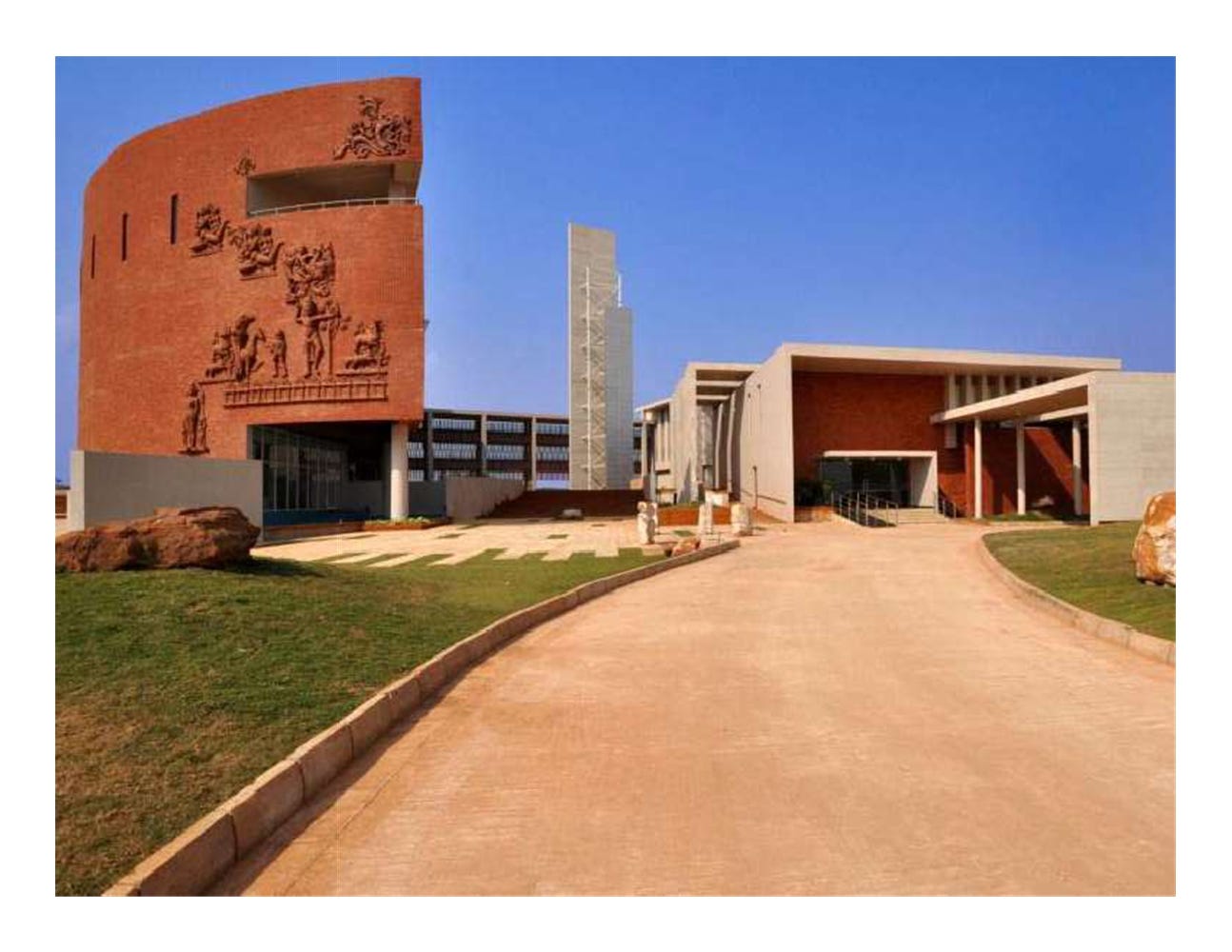I had never been fascinated with buildings, the way I had been with stories, poems, films, paintings. I never even considered them as things to admire or think about. Definitely never as art.
But when I encountered Howard Roark in The Fountainhead in my teens, I was floored. To my teenage mind, Roark was THE hero, uncompromising, deep, immersed in the love of what he created, living his life with singular integrity and passion. But most magical were the descriptions of the buildings Roark built - the ones which merged with the landscape they were built in, those living structures in which people blossomed and discovered themselves, buildings which seemed to come out of people, rather than where people came in.
And then I met my own Howard Roark in real life.
Meeting Abin Chaudhuri was serendipitous. The business conglomerate I work in was desperately looking for an architect for a management institute they were building in Calcutta. We'd run through every famous architect around - and were not getting a unique view, a compelling vision which matched ours, and how it could be embodied in form and structure.
Then one evening, I was coming back by train from Jamshedpur, after doing some hiring in XLRI, and found myself sitting beside the wife of a colleague, who was an interior decorator. She told me - "There's this young boy who comes to my studio who hasn't done much - maybe a house - but you should see the ideas which come bursting out of his head!" I had her call Abin from the train itself - and met Abin the next day.
Young, short, self-effacing, and a smile which started slowly but then filled a face. That was Abin. We talked, and went on talking for a good couple of hours. Abin expounded his vision of beauty, what architecture meant for him, how buildings were really domiciles of light and people and dreams, his favorite buildings, legends whose work coursed through his blood - Abin wanted to change the world through his work. He was itching to do something significant, something which would stand to mean for something.
I knew we had found our man.
Abin built our management institute. It was not only iconic, but went on to win any number of awards across the world. It was his first building of significance - and he had already created something which was redefining the landscape.
In no time, he got the commission to build another institute for us, in Bhubaneswar, which was as different from the one in Calcutta as chalk and cheese. The new one seemed to emerge from the red soil of Orissa, embodying its colour, its ferric strength, its contours, its culture.
In just one decade now, Abin’s firm Abin Design Studio has become one of the premier architectural firms in the country. In 2014, his work was selected by the Museum of Modern Art (MoMA), New York, for publication and a travelling exhibition - "Uneven Growth: Tactical Urbanisms for Expanding Megacities”. He has been recognized as one of the top living architects any number of times by international and national agencies, publications and expert entities. His list of awards is endless.
And with the typical humility which he brings into his whole life and being, he has now sought to change the landscape of the suburbs he comes from - Bansberia, a sleepy place with nothing to distinguish it from many others across the state of West Bengal. And he has gone right ahead and started to create masterpieces there, sometimes commissioned, sometimes with government help, sometimes on his own. A waterside clubhouse, a thakurdalan (a sheltered courtyard for rituals), a Wall House, a house-in-a-house called "House of Sweeping Shadows", a pavilion which abstracts the experience of walking through forests called "Pavilion of Canopies", et al.
One can take an architectural tour of this area looping between at least ten projects including private commissions to public interventions, with one building informing the conception of another, and revel how the seamless meshing of the unique has been done in a rural/semi-urban environ.
This incredible intervention has now made Bansberia a destination for people who want to experience how amalgamating architecture into the quotidian lives of society can change a landscape and its people in amazing ways.
One of the latest projects of Abin has been the iconic RPSG House which is wowing people from all across the world. This is how its lobby has been described -
“A play of monumentality and intimacy, subdued material palette, and larger-than-life focal elements was implemented for a grand entrance atrium. The design is reminiscent of the life-affirming river ghats of the country, leading upto the spires of temples and places of collective wisdom where everyday life meets spirituality.”
He is now building, amongst many many other projects, the Bandhan Bank headquarters, a 2,00,000 sq feet beauty in New Town, Calcutta. I told him this looks like something on Wall Street. His slow smile simply fills the room.
Some other projects of Abin which I completely love!
Follow Abin Design Studio here. Read more here.
Hear Abin speak about his journey, his philosophy, his dreams, in this conversation I had with him some years back.
















A fascinating read!! The write-up will definitely create awareness among readers the multi-dimensional aspects of Architecture that it is not only a living art but much more than that.
And more facinating was listening to the interview where you get a glimpse of the brilliant creative mind of the very talented Architect Abin Chaudhuri. Thank you for sharing the interview!!
Would love to visit his works sometime..